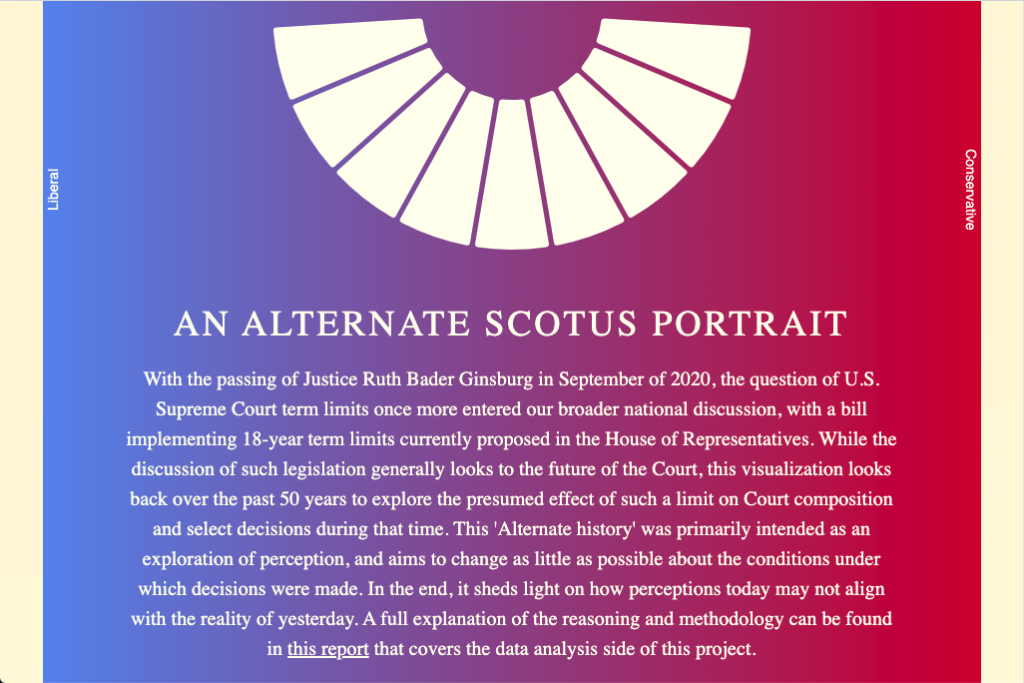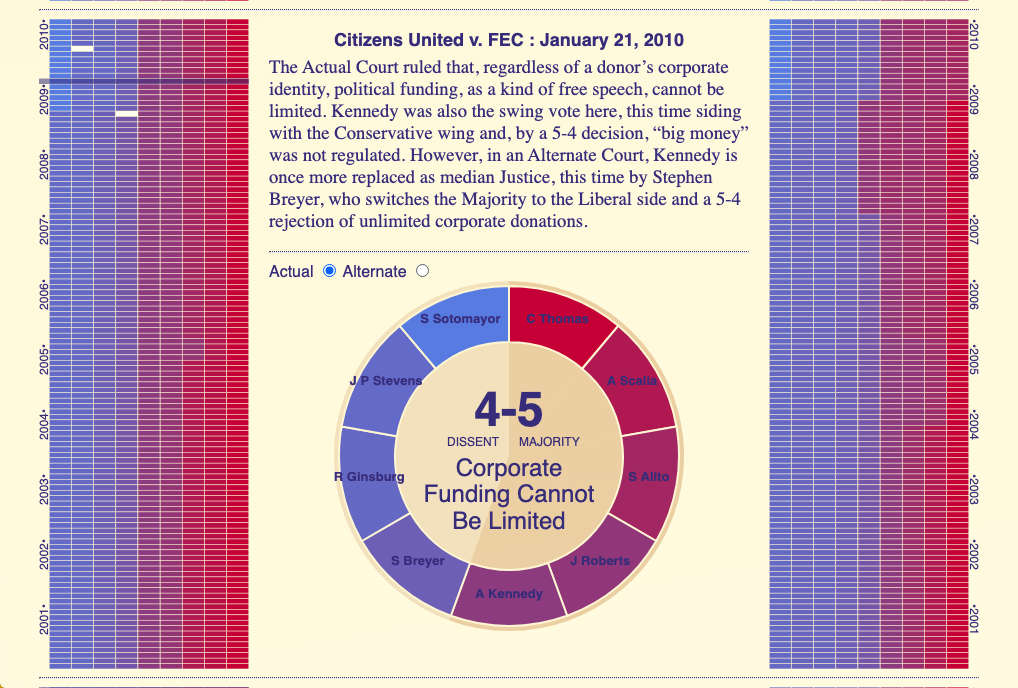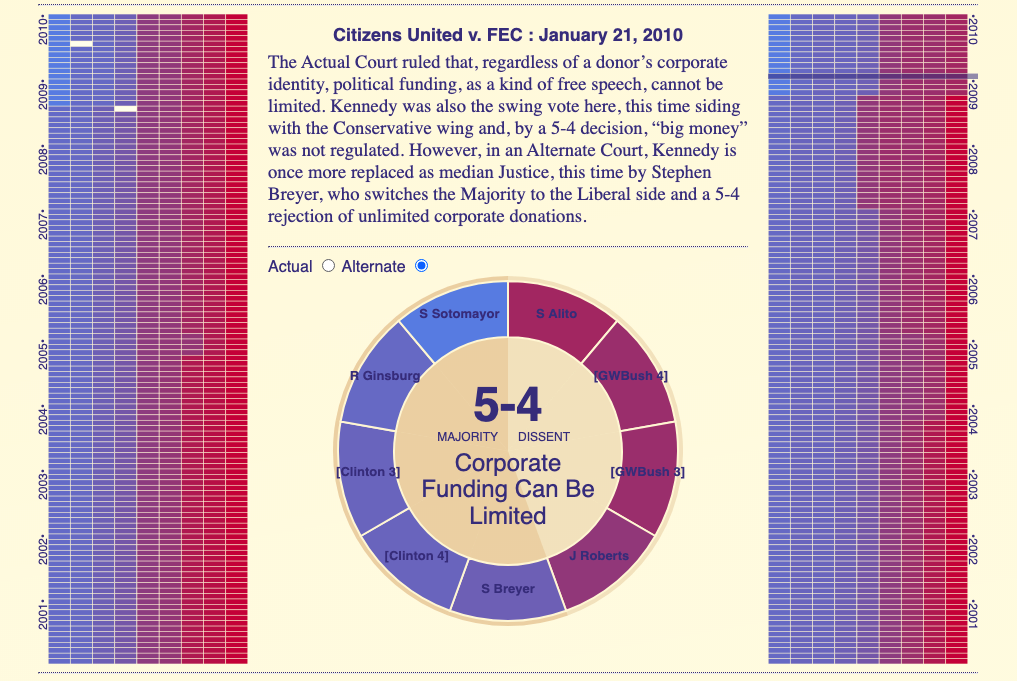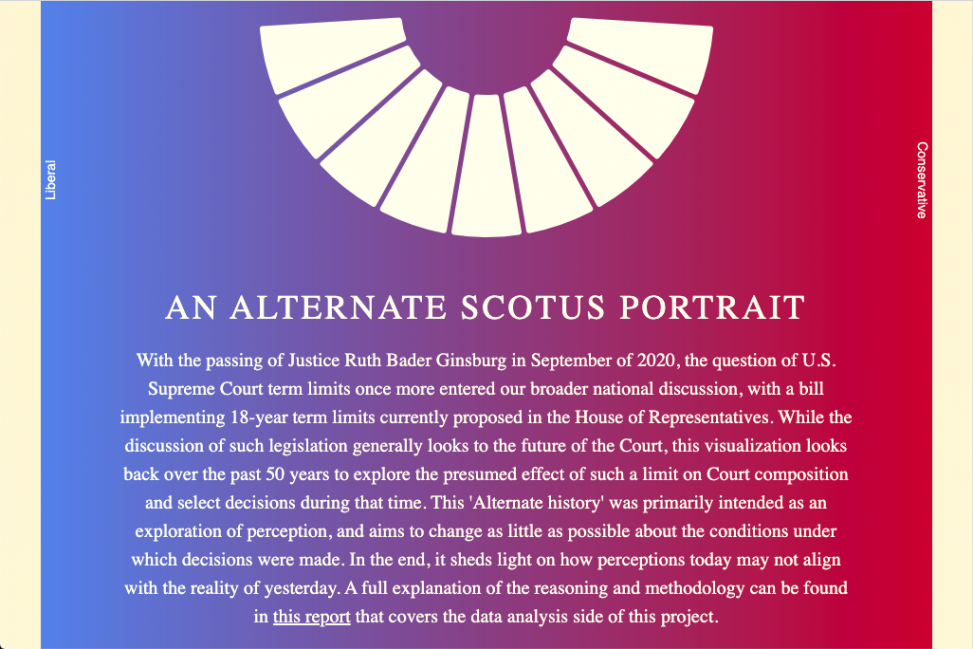The final interactive version of this project can be found here.

This project presents and reflects on the application of an alternate history of the U.S. Supreme Court, built from established ideological measurements and tenure data. The implementation of an 18-year term limit for Justices starting in 1970 is explored through case studies of five notable court decisions.
Parallel heat maps chart the ideology of the Court for each year since 1971, in ‘Actual’ and ‘Alternate’ history. A representative Justice ideology value was calculated as a mean of each Justice’s annual Estimated Martin-Quinn Score, an established measure intended to communicate “the relative location of U.S. Supreme Court justices on an ideological continuum.” Color values were determined by sorting Justices since 1937 into quantiles. Alternate Justices were created based on previous appointments of the sitting President when vacancies occur.

For each decade, a case study is presented, detailing majority and dissent, with Justice names applied in order from ‘leftmost’ to ‘rightmost.’ Hovering over a Justice reveals all color values from the heat map for that year.

Within each case study, selecting ‘Alternate’ toggles a timeline marker and reveals any potential (presumed) change in the decision, as well as and new Justices and their ideologies (on hover).

Check out the full page to explore the 50-year story (including a somewhat surprise ‘ending.’ In addition, a kind of sibling project examining Purple Values across the 50 states (and building on other work done with this one) can be found here. •

